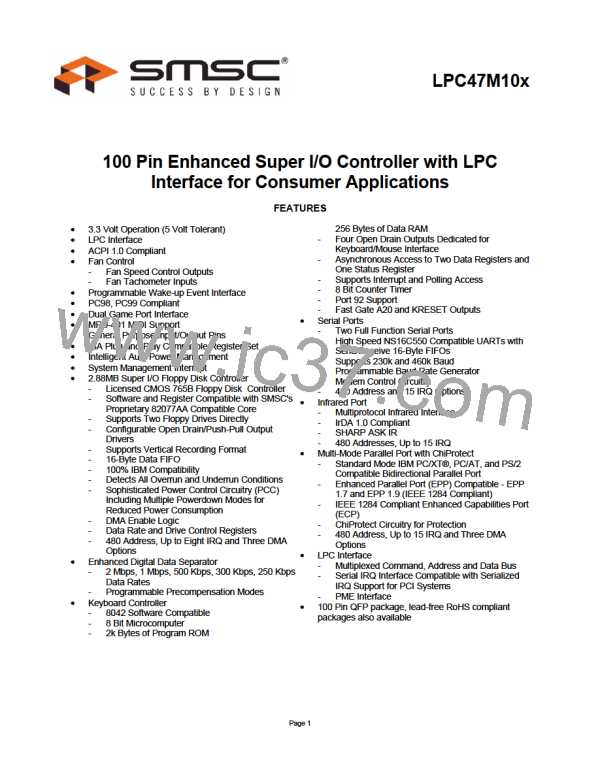3. Transmitter Holding Register Empty
4. MODEM Status (lowest priority)
Information indicating that a prioritized interrupt is pending and the source of that interrupt is stored in the Interrupt
Identification Register (refer to Interrupt Control Table). When the CPU accesses the IIR, the Serial Port freezes all
interrupts and indicates the highest priority pending interrupt to the CPU. During this CPU access, even if the Serial Port
records new interrupts, the current indication does not change until access is completed. The contents of the IIR are
described below.
Bit 0
This bit can be used in either a hardwired prioritized or polled environment to indicate whether an interrupt is pending.
When bit 0 is a logic "0", an interrupt is pending and the contents of the IIR may be used as a pointer to the appropriate
internal service routine. When bit 0 is a logic "1", no interrupt is pending.
Bits 1 and 2
These two bits of the IIR are used to identify the highest priority interrupt pending as indicated by the Interrupt Control
Table.
Bit 3
In non-FIFO mode, this bit is a logic "0". In FIFO mode this bit is set along with bit 2 when a timeout interrupt is pending.
Bits 4 and 5
These bits of the IIR are always logic "0".
Bits 6 and 7
These two bits are set when the FIFO CONTROL Register bit 0 equals 1.
RCVR FIFO
Bit 7 Bit 6 Trigger Level (BYTES)
0
0
1
1
0
1
0
1
1
4
8
14
Page 57

 SMSC [ SMSC CORPORATION ]
SMSC [ SMSC CORPORATION ]